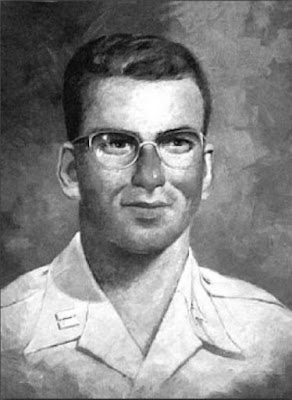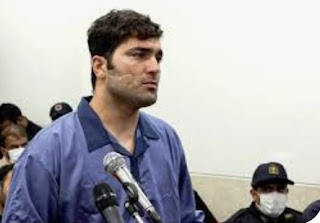The American soldiers who guarded Saddam Hussein in his last weeks genuinely grieved for him
The American Soldiers Who Grieved for Saddam Hussein
Two books shed new light on the toppled dictator's final days—and what the U.S. still doesn’t understand about Iraq.
You can still watch him die on YouTube. Saddam Hussein Abd al-Majid al-Tikriti—who rose from provincial obscurity to dominate his country and wage war across the Middle East, becoming the scourge of three American presidents, ally to another, and, finally, the most prominent casualty of the war on terror—ascends the gallows. He’s surrounded by men in masks, some of whom heckle him with Shiite slogans.
Related: The Death That Shocked The World, How King Charles XII Was Killed In Norway, The Young Warrior.
Using a surprising degree of care, a man places a black scarf around his neck. A noose is thrown around the scarf and cinched tight. Saddam yells at the crowd, “Do you consider this bravery?” Someone tells him to go to hell. “The hell that is Iraq?” he retorts. He begins to recite the Shahada, the Islamic profession of faith, when a door opens beneath him, and he falls, snapping his neck.
It’s here, at the moment of his death, that the videos usually lose him. The camera goes suddenly askew and the sound is washed out with celebratory shouts. Later, the picture settles on his face, his body cloaked in shadow.
What you can’t see in these videos is what happened afterward. As Saddam’s body was taken out of the execution chamber, a feverish crowd began to beat and spit on him. Nearby, a dozen-odd American soldiers looked on, and rather than joining in the crowd’s exultation, they shared a feeling of sadness, followed by outrage. One soldier was so incensed that he launched himself toward the crowd, only to be held back by one of his colleagues.
Perhaps this is the most shocking thing about Saddam Hussein’s 2006 death: that the American soldiers who guarded him in his last weeks genuinely grieved for him. These details emerge in The Prisoner in His Palace, a new book by Will Bardenwerper, a former infantry officer and Pentagon employee. “I feel like I let him down,” Specialist Adam Rogerson told Bardenwerper. It was as if he had lost a family member. “I almost feel like a murderer, like I killed a guy I was close to.”
Such feelings seem to be widely shared among the young men who guarded Saddam Hussein up until the moment of his execution. Some of them spent months chatting, playing chess, and smoking cigars with a genial old man who bore no resemblance to the vicious dictator of Axis of Evil lore, on trial for crimes against humanity.
Several of the Super Twelve, as they came to call themselves, genuinely liked their prisoner and experienced post-traumatic stress after his death. For one young soldier, Saddam’s body was the first corpse he had ever seen. Steve Hutchison “sometimes wakes up with a jolt during the night, expecting to see Saddam.” Robert “Doc” Ellis, an Army nurse from St. Louis, later reflected, “I know I should hate Saddam, but it’s not easy.”
That a retinue of guards could grieve for their prisoner reflects the strange alchemy that can develop in such a peculiarly intimate situation. The American soldiers who guarded him were practically sequestered.
They were forbidden from talking about their work and spent most of their time either in the former palace where Saddam’s jail cell was constructed or the heavily guarded courthouse that hosted his trial. Furthermore, Saddam had survived for more than 30 years as Iraq’s president through intimidation, cunning, and occasional bursts of charm, and so he made for an unusual prisoner. Recognizing that his true enemy was George W. Bush, Saddam cooperated with his guards. He asked them about their families and girlfriends and wrote poems for them.
They joked and swapped stories, and the guards eventually became taken with the old man, who seemed to adapt well to his reduced conditions. Several of them even cleaned up a derelict room in the palace and turned it into an office for Saddam, who spent hours reading, conducting correspondence, and writing in his diaries.
Saddam’s literary side is often overlooked—an understandable omission when discussing someone responsible for horrific massacres—but it speaks to his divided character. He may have been capable of monstrous acts, but he could also resemble an eminently normal person, albeit one who was as likely to give a favored official a new Mercedes as send him off to prison. By 2003, the man who loved Dostoevsky and Naguib Mahfouz had removed himself from the daily affairs of state.
I appreciate you reading. Post your ideas in the space provided for comments below.
Read more on our News Channel












Comments
Post a Comment